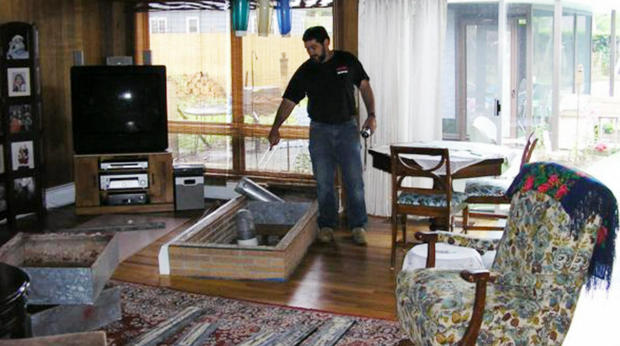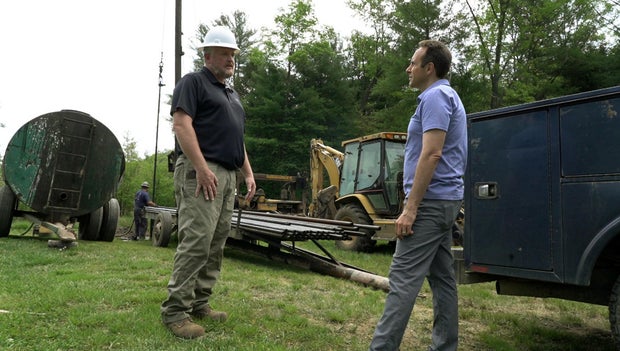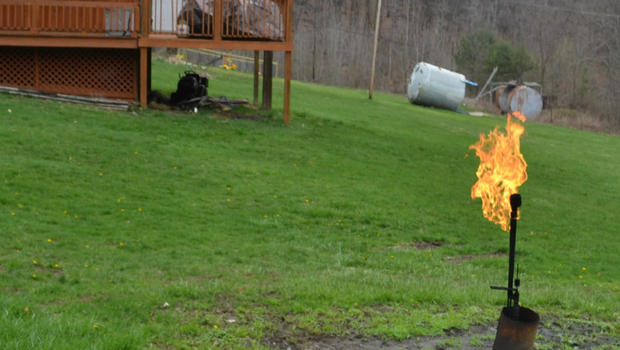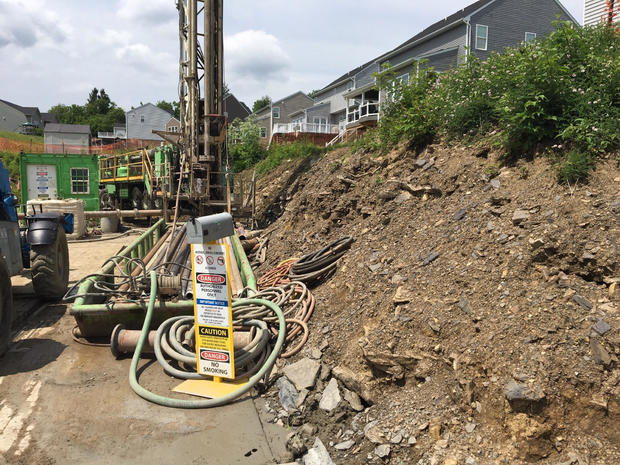Drilling for oil and gas has a long history in the U.S., dating all the way back to 1859 when the first successful commercial oil well — the Drake Well — was drilled in northwestern Pennsylvania. This long history has made the state ground zero for abandoned wells, which often leak dangerous pollution into the environment and potent greenhouse gases like methane into the air.
It is estimated there may be a few hundred thousand abandoned wells in Pennsylvania — some located in the woods, along riverbanks, in people's yards and even inside their homes. These wells are left behind — orphaned to the state — after their owners, often oil and gas companies, go bankrupt or when the wells fall into disrepair.
Once in state hands, it is the government's responsibility to plug the wells when they break. The EPA estimates there may be over 2 million abandoned wells across the nation.
In early June, we followed Don Cornell of the Pennsylvania Department of Environmental Protection to an emergency call in the town of Bradford to plug a leaking well in someone's backyard.
"This old oil and gas well came in because the landowner had a complaint. He noticed he had a puddle of oil in his backyard," explained Cornell.
Cornell says most of the wells that they deal with are from the early 1900s; there is no current owner and the companies are long gone or went bankrupt. "They didn't take care of the wells back when they were first drilled and walked away," he said.
"I've been in this position now for almost 11 years and I'm still amazed with what we come across, where the wells are in streams in the river — islands on the Allegheny River, there's wells there," Cornell said.
Even inside people's houses?
"Yep. In basements and foundations, they're just everywhere. And their driveways, when they don't know about it until one day oil start seeping up through their driveway."
Leaking wells are not only a local environmental hazard — they can also be a big contributor to warming the climate. Dr. Tony Ingraffea, a Cornell University professor and expert in this field, says many of these wells leak methane — a greenhouse gas much more potent than carbon dioxide.
"Especially during the first 10 years, that methane molecule traps 100 times [the heat] that carbon dioxide does," Ingraffea explained. That's why he says says there is an urgency to plugging these wells: "Turn down methane and you get an immediate response."
A recent U.N. report found that cutting methane emissions is the "strongest lever" humanity has to slow climate change this decade and keep warming below catastrophic levels.
Cornell says there are over 10,000 documented wells in his state and possibly hundreds of thousands more that are undocumented. But the problem is funding. Right now, Pennsylvania has a yearly budget of about $1.5 million for this work, but Cornell says that only covers about 30 wells a year.
That's why the state is hoping for a windfall from the federal government. In President's Biden's climate plan, he proposed $16 billion to plug wells and clean up abandoned mines. So far, this funding has survived, and made it into the bipartisan infrastructure deal.
Cornell said the federal money "would be huge" for Pennsylvania. "The public safety aspect. Stopping pollution. The jobs for contractors and citizens to come out and do this work. It would be huge."
While these wells are a big environmental threat, experts say they are also a huge job creation opportunity, especially for displaced fossil fuel workers.
A new study by Ted Boettner of the Ohio Valley River Institute, a clean energy group, finds that plugging abandoned wells in the four-state area of Ohio, Kentucky, West Virginia and Pennsylvania alone could create over 15,000 jobs per year over 20 years.
Berardelli: "So this is a win-win. We're stopping methane from getting into the atmosphere and we're putting a lot of people to work?"
Boettner: "Yeah, absolutely. These are economically distressed areas that suffer greatly from the deindustrialization and the collapse of the coal industry as well. This is about creating jobs where people want to work and want to live and not about training them, or dislocating people to places they don't want to be."
Ingraffea agrees, but he argues the oil and gas companies should bear most of the burden.
"It's the industry that drilled the well. It's the industry that made money from the well. It's the industry that was supposed to follow regulations for proper design, proper construction, proper maintenance and ownership of that well forever — and now they are saying let the taxpayers pay for it? No. No. The money has to come from the shareholders. The money has to come from the coffers of the oil and gas industry. They made the mess. They clean it up," Ingraffea said.
But in Boettner's view, the problem is just too big and money from the federal government can go a long way to help.
"In 2018 states only spent about $53 million. Plugging orphan wells, if you look at the entire problem, that number could be about over $60 billion around this country, just dealing with the orphan wells," he said. "So states are really struggling to deal with this problem. And this is a good example where the federal government can come in and provide some investment and get people back to work in jobs that they want to have."
"save" - Google News
June 30, 2021 at 07:32AM
https://ift.tt/3jr9ip6
Plugging abandoned oil and gas wells could help save the environment – and jobs - CBS News
"save" - Google News
https://ift.tt/2SvBSrf
https://ift.tt/2zJxCxA
Bagikan Berita Ini



















0 Response to "Plugging abandoned oil and gas wells could help save the environment – and jobs - CBS News"
Post a Comment